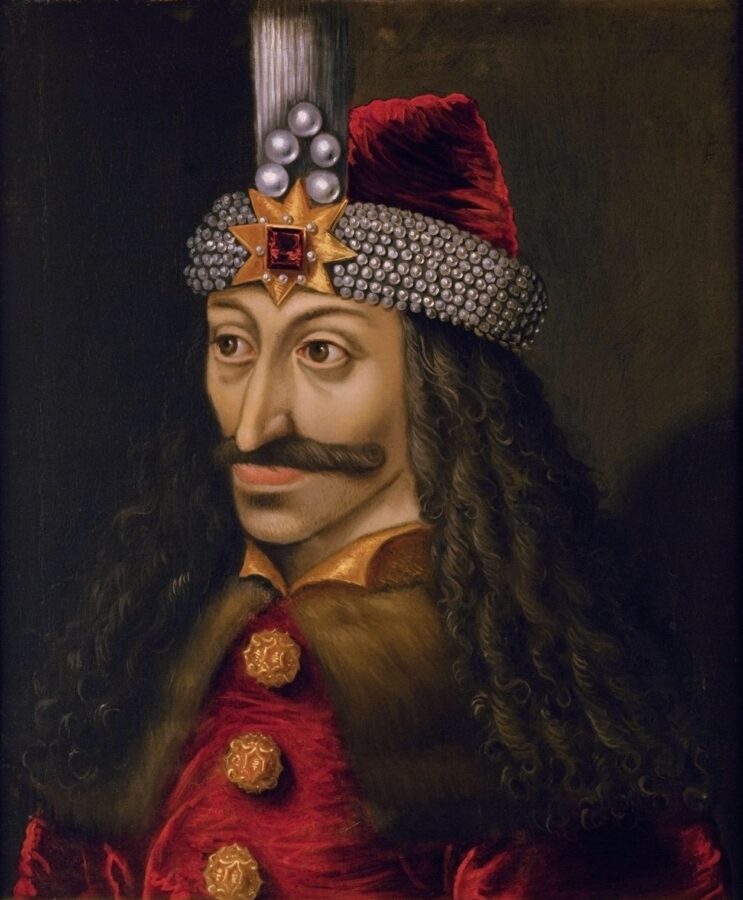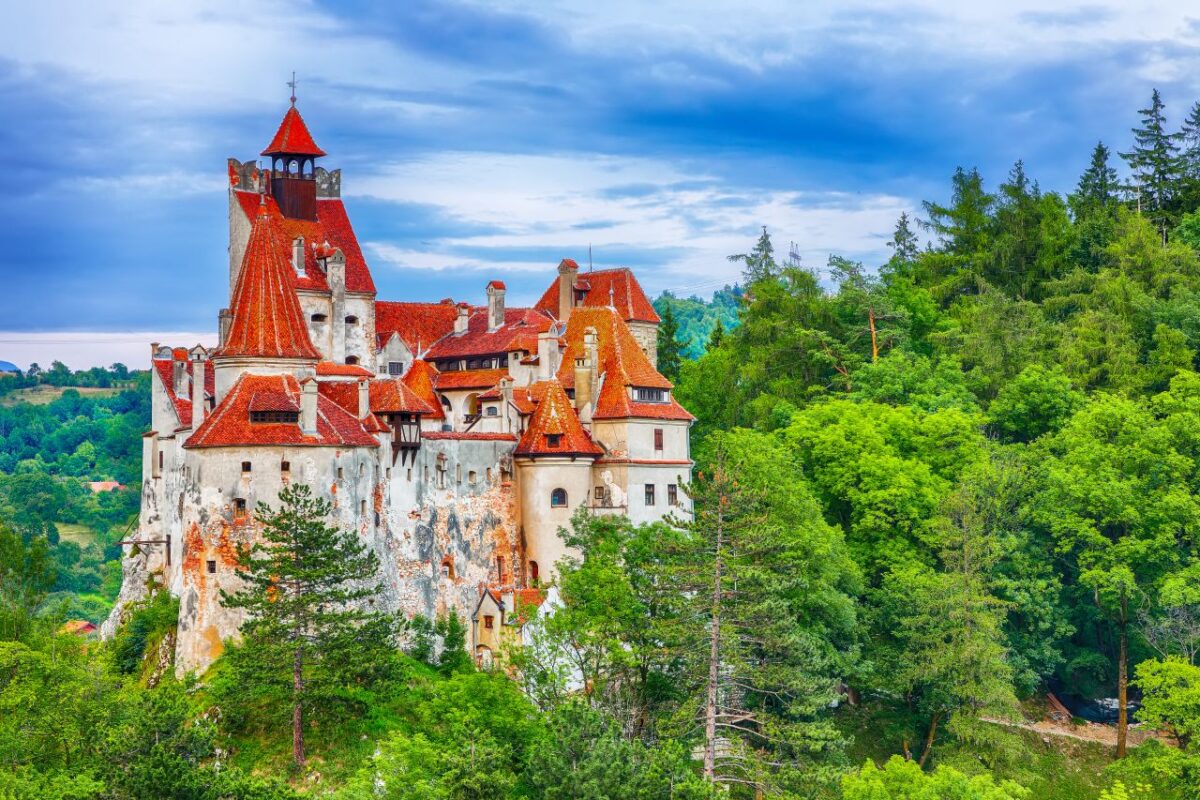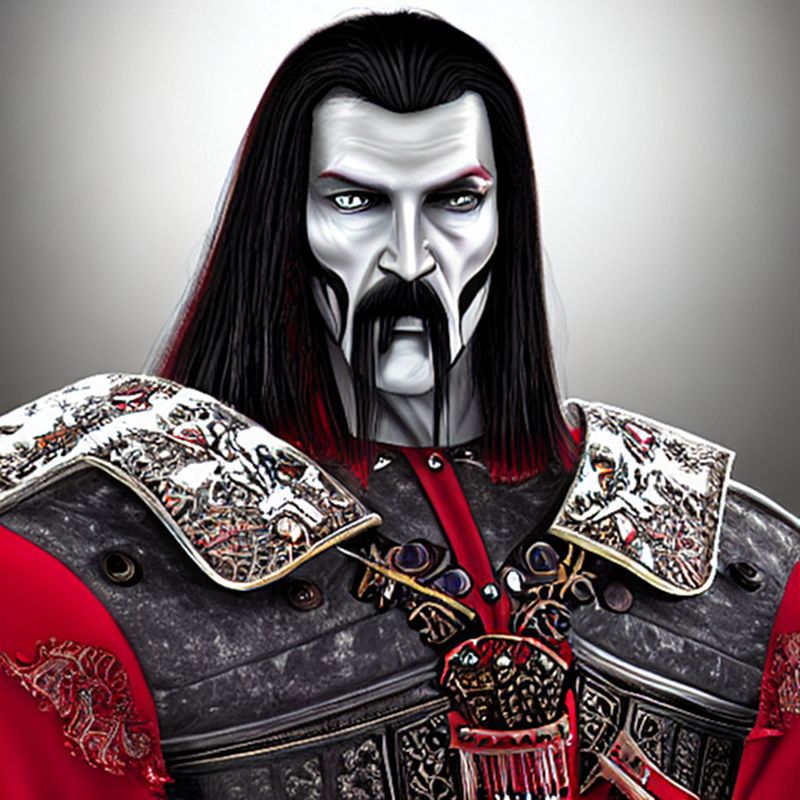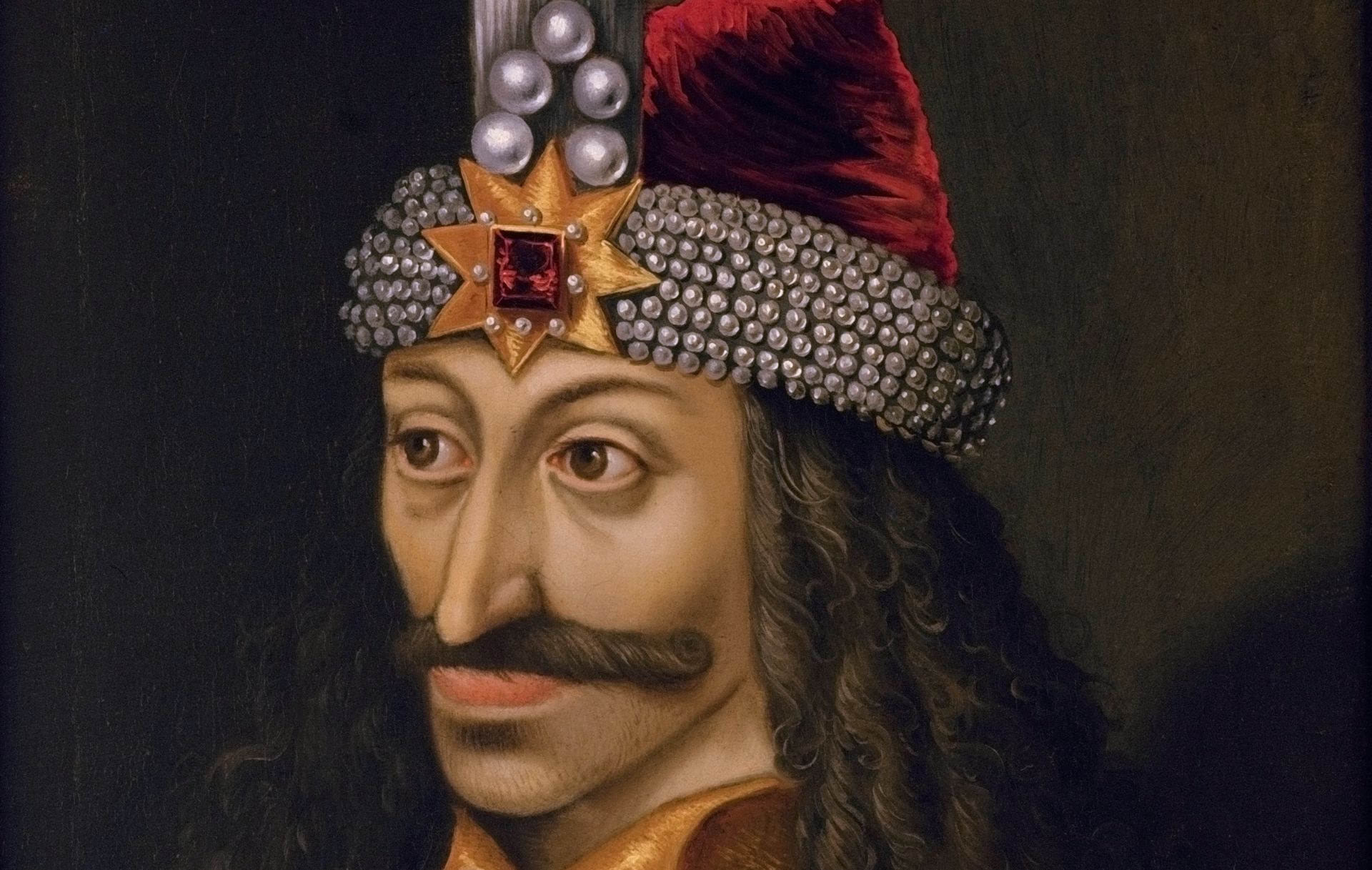The Romanian Legend of Vlad the Impaler, also known as Dracula, is one of the best known tales coming from Romania – but also one that holds at least some truth.
And in today’s article, we are going to learn everything about the ruthless ruler Vlad the Impaler (in Romanian: Vlad Tepes) and how it became the inspiration for the most popular vampire in the world.
I’ll try to keep the talks about his life and reign as short and fun as possible – but with a historical figure like Vlad Tepes, anybody can make it an entertaining read (or at least so I hope).
With all these in mind, let’s find out everything about Vlad the Impaler aka Vlad Tepes or Vlad Dracul (Vlad the Devil).
Vlad the Impaler: The Real Inspiration Behind Dracula

By now, we probably all know that Vlad the Impaler serves as the enigmatic figure that inspired the legendary vampire character Dracula. I wrote a more in-depth article about vampires in Romania – make sure to read it when you’re done with this one.
So… who was Vlad the Impaler?
Vlad Dracul was a 15th-century ruler of Wallachia, a region in present-day Romania.
He earned his nickname “the Impaler” due to his brutal method of execution, where he would impale his enemies on long, sharp stakes.
He was a ruthless rules who would punish foreign enemies, as well as local ones that he considered personal enemies.
As a fun fact, even though it’s Vlad Tepes that is known for impaling enemies, the practice was relatively widespread during those times and he was not the only one to use this horrible method to punish his adversaries.
However, due to various circumstances, it was this ruler that was chosen by history to be the epitome of ruthlessness and cruelty and, in the end, impaling enemies. (Maybe he was indeed the cruelest of them all).
Either way, Vlad the Impaler ruled Wallachia in a time of political turmoil and warfare between various Eastern European powers and the Ottoman Empire.
His reign was marked by his fierce resistance against the empire’s expansion into Europe, managing to defend his principality better than other rulers of the time.
Vlad Tepes: Early Life and Background

Vlad the Impaler was born in 1431 in the fortress of Sighișoara, in Transylvania, a region that was then part of the Kingdom of Hungary.
(As it happens to everything from those times, it’s not 100% that he was born there, but this is what most people believe).
Initially known as Vlad III, he was the son of ruler Vlad II, another similarly charming person known as Dracul (the devil) – and his son initially became Drăculea, which could mean “the sone of Dracul” – and we already see the resemblance to modern day’s Dracula.
Vlad III’s early years were marked by instability and violence. In 1442, his father was overthrown and killed by rivals, while Vlad and his younger brother Radu the Handsome were taken hostage by the Ottoman Empire.
In captivity, Vlad III spent his time being educated by the empire’s scholars, being trained in military tactics and diplomacy.
Probably not the brightest idea to train your enemies… but this is how things were done back then, when they believed that they can truly reform people and turn them into their puppets. And the truth is that sometimes they succeeded.
Either way, it was during these early years of captivity that Vlad became the cruel person he was later known for, after witnessing first hand the cruelty and brutality of the Ottoman Empire, both on him and his family, as well as his fellow Wallachians.
Vlad’s Rise to Power
In 1448, after spending six years in captivity and being “reformed,” Vlad and his brother were released and allowed to return to Wallachia.
Vlad III immediately began a campaign to regain his father’s throne. He allied himself with Hungary and launched a series of attacks against the Ottoman Empire. Yup, it’s pretty clear by now that they hadn’t managed to reform him.
He had a very short reign of just a few months in 1448, but his main one started in 1456, lasting until 1462.
During this time, he was always under pressure from local noblemen, the Ottomans and basically everybody around him.
In order to maintain his power, Vlad III started using ruthless tactics and drastic, cruel measures against anybody who dared to challenge him. The main way of punishing his enemies was impaling, which usually resulted in a slow, painful death.
Even more, he usually left the bodies on display as a warning to others. And don’t think he had one-two prisoners suffer this fate. No, there were forests turned into spikes, where at times there were hundreds of people impaled.
This is when he earned the nickname “Vlad the Impaler,” which he is still known by today.

And even though impaling was what consecrated him, he used various other similarly horrible “punishment” methods, such as boiling, burning, and skinning alive.
As you can see, the rule of Vlad the Impaler was marked by his relentless pursuit of maintaining control over the region (while staying alive) and instilling fear in his subjects and opponents. It was a period marred by blood and brutality.
And it’s pretty obvious that during this type of times, the craziest legends are born – and these legends were the root of the creation of Dracula.
However, despite the shocking sadism that was obvious with Vlad the Impaler’s reign, it’s important to note that he was not just a deranged maniac that liked to hurt people.
He also implemented strict laws and policies aimed at maintaining order and stability within his territories.
His strict discipline and harsh punishment for even the smallest crimes created an environment where crime rates were significantly reduced and order was kept in the region.
He was also an amazing military leader whose methods managed to bring in important victories against much stronger opponents – mainly the Ottomans.
He had a major influence over the culture of modern day Romania and you can read more about the Romanian culture here.
Legacy and Influence of Vlad the Impaler aka Dracula

Vlad the Impaler left a lasting legacy and had a huge influence in Romania’s history, being appreciated as one of the nation’s greatest leaders and most important figures, despite his cruel methods of ruling and undeniably gruesome actions.
But one legacy that probably nobody expected was that of him becoming the leader of the vampires, the bloodthirsty, bat-person known as Dracula.
The Legend of Dracula
In 1897, Irish author Bram Stoker published his novel Dracula, which was loosely based on the life of Vlad the Impaler.
Stoker’s novel transformed Vlad the Impaler into a mythical figure, a vampire who could transform into a bat and who had a thirst for blood.
He also lived in one of Romania’s most impressive castles, Bran Castle. And even though this never really happened (and Vlad Dracul never set foot in that castle), the Romanians gladly took it and now Dracula’s castle can be visited – with many doing so without knowing that it was never his home.
Either way, thanks to Bram Stoker’s novel and movie adaptation, Vlad the Impaler’s name (or nickname – Dracula) has become synonymous with the horror genre, and his story has inspired countless books, films, and television shows.
Conclusion
Vlad the Impaler, also known as Dracula, was a complex and fascinating historical figure whose legacy has persisted to this day.
While his brutal, ruthless and cruel tactics and reputation for impaling his enemies have earned him a place in history as a bloodthirsty, deranged tyrant (which he probably was), he is also remembered as a hero who fought against a much stronger Ottoman Empire and defended his people with success on numerous occasions.
But he was, in reality, not a vampire, he did not drink the blood of his enemies, did not wear a cape and certainly couldn’t turn himself into a bat. And unfortunately, never set foot in what is known today as Dracula’s Castle – Bran Castle in Transylvania.
All in all, I hope that you find this short history of Vlad Tepes aka Vlad the Impaler / Dracula a nice read and learned a few things in the process.
If you want to continue learning more about Romania, make sure to read my previous article sharing some fun facts about the country.
- List of the International Airports in Romania (with Map) - April 25, 2024
- Beach, Please Festival 2024: Lineup, Schedule & Dates [Updated April 24] - April 24, 2024
- Best Music Festivals in Romania – with Dates & Lineups [2024 Update] - April 17, 2024

